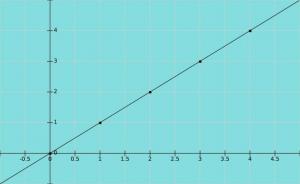Difference between DNA and RNA
DNA is deoxyribonucleic acid and RNA is ribonucleic acid. Both are nucleic acids, macromolecules essential for the life of organisms.
The fundamental structure of nucleic acids are nucleotides, consisting of:
- a five carbon sugar or pentose,
- a phosphate group and
- a nitrogenous base.
Nucleotides connect to each other to form polynucleotide chains.
| DNA | RNA | |
|---|---|---|
| Molecule type | Deoxyribonucleic acid. | Ribonucleic acid. |
| Structure | Double chain. | Simple chain. |
| Nitrogen bases | Adenine, thymine, cytosine, and guanine. | Adenine, uracil, cytosine, and guanine. |
| Complementary bases |
Adenine-thymine Cytosine-guanine |
Adenine-uracil Cytosine-guanine |
| Sugar | Deoxyribose | Ribose. |
| Types |
|
|
| Features | Store and transfer genetic information. | Interpret the genetic code of DNA to drive protein synthesis. |
| Localization in prokaryotes | Cytoplasm. | Cytoplasm. |
| Location in eukaryotes | Nucleus, mitochondria. | Nucleus, cytoplasm. |
What is DNA?
DNA is the genetic material present in all living things. In prokaryotes it is found in the cytoplasm of the cell; in the eukaryotic cell it is found within the nucleus, in the mitochondria or chloroplasts.
It is a macromolecule of the group of nucleic acids and means deoxyribonucleic acid.
DNA structure

The basis of nucleic acids is the nucleotide. In DNA, the nucleotide is composed of:
- a five-carbon sugar (pentose) which is the deoxyribose;
- the Phosphate group, which binds to the hydroxyl group of carbon 5 of a deoxyribose and the hydroxyl of carbon 3 of another deoxyribose;
- nitrogenous bases, which have nitrogen and can capture hydrogen, acquiring a basic character. Four nitrogenous bases are obtained in DNA: adenine, guanine, cytosine, and thymine.
The nucleotides come together and form a polynucleotide chain. DNA is made up of two polynucleotide chains that twist into a helix. We can see it as a spiral staircase, where the handrails are made up of phosphate and deoxyribose groups, and the steps are made up of pairs of nitrogenous bases.
Nitrogen base pairing is also characteristic of DNA, adenine complements thymine, and guanine complements thymine. The analogy is like a LEGO piece that fits together with another piece.
DNA types
DNA has two types:
- Nuclear DNA: it is the DNA where all the genetic information of the cell is obtained, and determines its function.
- Mitochondrial DNA: Mitochondria have their own DNA, which codes for the proteins necessary to carry out the function of these organelles. It is a circular DNA.
You may be interested in knowing about prokaryotic cell and eukaryotic cell
What is RNA?
RNA is a macromolecule from the group of nucleic acids. RNA means ribonucleic acid. It is the link between DNA and cell function. Genetic information stored in DNA is "transcribed" to RNA, which then "translates" the information into proteins. Proteins are the expression of genes.
RNA structure
In RNA, the nucleotide is composed of:
- a five-carbon sugar (pentose) which is the ribose;
- the Phosphate group, which binds to the hydroxyl group of carbon 5 of a ribose and the hydroxyl of carbon 3 of another ribose;
- nitrogenous bases, which have nitrogen and can capture hydrogen, acquiring a basic character. Four nitrogenous bases are obtained in RNA: adenine, guanine, cytosine, and uracil.
RNA has a single polynucleotide chain, and is smaller than DNA. Although it is a linear chain, there are RNAs that can fold back on themselves.
RNA types
There are several different types of RNA:
- Messenger RNA: it is the copy of the DNA message in the form of RNA, for the synthesis of proteins.
- Transfer RNA: it is the RNA that transports amino acids to the ribosome, for the production of proteins.
- Ribosomal RNA: ribosomes are structurally armed by RNA.
- MicroRNA: they are small RNAs that participate in genetic regulation.
You may also be interested in seeing:
- Genotype and phenotype
- Genes and chromosomes
- Biology areas.

Doctor in Biochemistry from the Venezuelan Institute of Scientific Research (IVIC), with a degree in Bioanalysis from the Central University of Venezuela.



